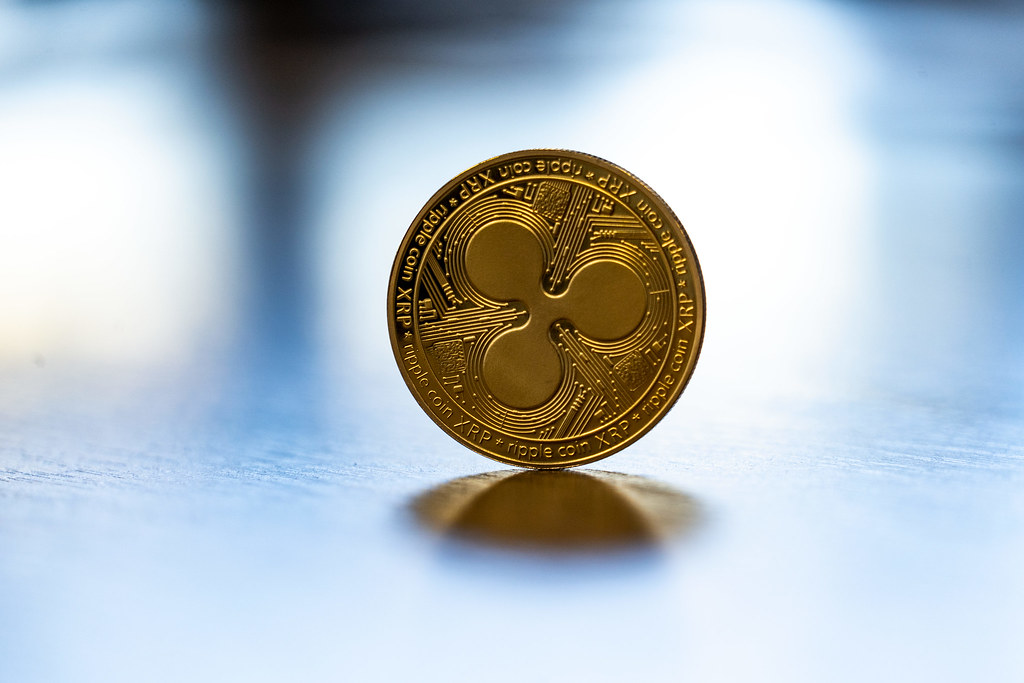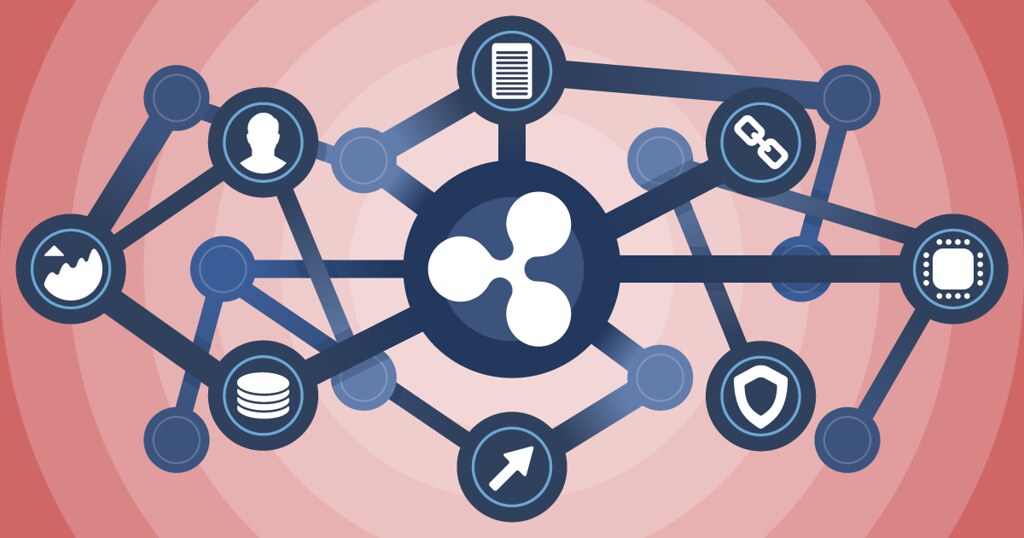Main Points:
- Clobber Feature Implementation: XRP Ledger activates a clobber function approved by over 90% of validators.
- Direct Trading for RLUSD: Ripple’s dollar-pegged stablecoin, RLUSD, now tradable on the decentralized exchange (DEX).
- AMM Integration and Regulatory Compliance: Improved compliance for Automated Market Maker (AMM) pools by integrating tokens with clobber capabilities.
- Broader Impact on DeFi and Liquidity: The upgrade is expected to boost liquidity, broaden trading options, and foster growth in decentralized finance activities.
- Recent Developments and Future Prospects: Incorporating additional industry trends, the upgrade positions XRP Ledger as a practical solution for regulated token trading and innovative revenue models in the crypto space.

The XRP Ledger has taken a significant step forward in its evolution as a blockchain platform by implementing a major software update that introduces the clobber feature. Approved by more than 90% of the ledger’s validators on January 31, this update not only bolsters regulatory compliance on the network but also paves the way for new types of tokens and decentralized finance (DeFi) applications. In this article, we explore the details of the update, its impact on Ripple’s RLUSD stablecoin, and its broader implications for liquidity and market integrity. We also reference recent developments from other sources to provide a comprehensive overview of where the XRP Ledger stands in today’s dynamic crypto ecosystem.
The Clobber Feature: What It Is and How It Works
Subheading: Understanding the Clobber Function
The clobber function is a specialized feature implemented on the XRP Ledger that allows token issuers to retrieve tokens from users’ wallets under predefined conditions. Typically, this function is intended to ensure regulatory compliance. For instance, if tokens are accidentally sent to an incorrect address or if the tokens are associated with fraudulent or illicit activities, the issuer can “clobber” (i.e., reclaim) them to protect both users and the broader ecosystem.
By enabling this function on the XRP Ledger, Ripple has taken a proactive step toward aligning blockchain technology with regulatory frameworks, especially in regions where strict compliance is mandated. The technical implementation involved updating transaction types to ensure that clobber-enabled tokens are managed securely and in accordance with established protocols.
Subheading: Technical Aspects of the Update
The update, deployed on January 31, included changes to both token management and the transaction mechanics associated with Automated Market Maker (AMM) pools. The primary focus was on ensuring that tokens with clobber functionality—such as Ripple’s RLUSD stablecoin—could be integrated seamlessly into the ledger’s decentralized exchange environment without compromising on safety or regulatory standards. A notable part of the update was the modification of the “AMMDeposit” transaction type, which now prevents frozen tokens from being inadvertently deposited into liquidity pools.
Ripple’s RLUSD and Its Role on the XRP Ledger
Subheading: RLUSD – A Dollar-Pegged Stablecoin
Ripple’s RLUSD is a stablecoin pegged to the U.S. dollar. The introduction of the clobber function means that RLUSD, which inherently includes clobber capabilities, can now be traded directly on the XRP Ledger’s decentralized exchange. This marks an important development for traders and investors who seek a stable and regulated digital asset for various financial activities, including hedging and arbitrage.
Subheading: Impact on Liquidity and Trading Options
With RLUSD now available for direct trading on the XRP Ledger DEX, liquidity is expected to increase significantly. Prior to this update, the absence of a direct trading mechanism limited the token’s usability in decentralized markets. However, by allowing RLUSD to be directly integrated into AMM pools, the network is poised to see increased trading volumes, broader participation from institutional investors, and heightened market activity. This integration is particularly beneficial for users looking to engage in automated market making and liquidity provision strategies, as it opens up new revenue streams and hedging opportunities.
Decentralized Exchange (DEX) and Automated Market Maker (AMM) Pools
Subheading: The XRP Ledger DEX and Its Role in Modern Finance
The XRP Ledger has long offered an in-built decentralized exchange that enables users to swap tokens without relying on centralized intermediaries. This feature is essential in a financial ecosystem where decentralization and autonomy are prized. The introduction of the clobber feature enhances the DEX’s functionality by allowing tokens with special compliance features to be traded directly, thereby expanding the range of assets available on the platform.
Subheading: Automated Market Maker (AMM) Pools and Their Evolution
Since the introduction of the AMM feature in March 2024 via proposal XLS-30D, the XRP Ledger has processed over $1 billion in swap transactions. AMMs use liquidity pools instead of traditional order books to facilitate trades, providing a more fluid and accessible trading experience. With the recent update, AMM pools on the XRP Ledger are now more compliant with regulatory standards, thanks to the integration of clobber-enabled tokens. The refined “AMMDeposit” transaction prevents frozen tokens from entering these pools, thereby safeguarding the integrity of liquidity provision and enhancing overall market stability.
Regulatory Compliance and Market Integrity
Subheading: Addressing Regulatory Concerns in a Decentralized World
One of the biggest challenges facing the crypto industry is the need to comply with increasingly strict regulatory standards. The ability to “clobber” tokens serves as an effective mechanism to mitigate risks associated with fraud, misdirected transactions, or illicit activities. By incorporating this feature, the XRP Ledger reinforces its commitment to regulatory compliance. This is especially crucial for digital assets like RLUSD, where trust and adherence to legal standards are fundamental to adoption.
Subheading: Enhancing Trust Through Built-In Safeguards
Market integrity is bolstered by such features, which reassure both institutional and retail investors that the underlying technology supports safe and regulated trading practices. The XRP Ledger’s upgrade thus serves as an important milestone, demonstrating how blockchain platforms can innovate while simultaneously ensuring that necessary controls are in place to protect investors and maintain market order.
Recent Developments and Industry Trends
Subheading: Broader Crypto Market Trends
Recent industry trends indicate a growing demand for digital assets that not only offer innovative trading opportunities but also meet regulatory standards. As governments worldwide continue to draft and enforce regulations concerning digital currencies, platforms that incorporate compliance-friendly features are likely to stand out. Ripple’s proactive approach in integrating the clobber function is a testament to this evolving market landscape. Other blockchain platforms are also experimenting with similar features to enable secure token recovery and enhance compliance.
Subheading: Comparative Developments in Other Blockchains
In addition to developments on the XRP Ledger, other networks such as Ethereum and Binance Smart Chain are exploring mechanisms for regulatory compliance. For example, some projects have introduced “freeze” functionalities or escrow mechanisms to deal with tokens that might otherwise pose a risk. However, the clobber function on the XRP Ledger distinguishes itself by offering a direct, integrated solution within the native exchange infrastructure, thereby reducing friction and increasing user trust.
Subheading: Integration with Traditional Finance
Moreover, the enhanced regulatory compliance afforded by the clobber feature is attracting interest from traditional financial institutions looking to bridge the gap between conventional finance and decentralized digital assets. The ability to manage tokens with built-in compliance safeguards helps mitigate the risk of regulatory breaches, making the XRP Ledger an attractive option for institutions that require a robust compliance framework.
Future Prospects and Opportunities for Investors
Subheading: The Expanding Role of Stablecoins in DeFi
The direct trading of RLUSD on the XRP Ledger’s DEX is likely to spur further innovation in the stablecoin market. Investors and developers are increasingly looking for stablecoins that combine the stability of fiat currencies with the benefits of decentralized finance. With improved liquidity and compliance measures, RLUSD could serve as a gateway asset, attracting more participants to the XRP Ledger ecosystem. This, in turn, could lead to the creation of additional innovative financial products and services built on top of the platform.
Subheading: Potential for New Revenue Streams
For crypto enthusiasts and investors searching for the next revenue source, the integration of clobber-enabled tokens into AMM pools presents a novel opportunity. Liquidity providers can now engage with assets like RLUSD in a manner that is both safe and regulated, opening up new avenues for earning passive income through trading fees and liquidity incentives. As the ecosystem evolves, more projects might adopt similar mechanisms, potentially giving rise to a new class of compliant, high-yield digital assets.
Subheading: Long-Term Impact on the XRP Ecosystem
The upgrade to the XRP Ledger is more than just a technical update; it is a strategic move that could have far-reaching implications. By setting a standard for regulatory compliance while still promoting decentralization and innovation, Ripple is positioning its network as a leader in the next generation of blockchain technology. The improvements in liquidity, market trust, and regulatory adherence are expected to catalyze further development within the XRP ecosystem, making it an appealing platform for both developers and investors alike.
Future outlook
In summary, the recent implementation of the clobber feature on the XRP Ledger represents a significant milestone in the evolution of blockchain technology. With over 90% validator approval, the update allows tokens like Ripple’s RLUSD, which possess inherent clobber functionality, to be traded directly on the decentralized exchange. This integration not only improves liquidity and broadens trading options but also enhances the compliance and regulatory integrity of the Automated Market Maker pools.
The move reflects broader trends in the crypto space, where regulatory compliance is becoming as important as technical innovation. As other platforms also look to implement similar features, Ripple’s proactive approach positions it at the forefront of blending decentralized finance with traditional regulatory standards. For crypto enthusiasts, investors, and developers, this upgrade presents new opportunities to explore innovative revenue models and engage with stable, compliant digital assets. Ultimately, the enhanced functionality of the XRP Ledger is poised to drive further growth and trust in the decentralized financial ecosystem.


